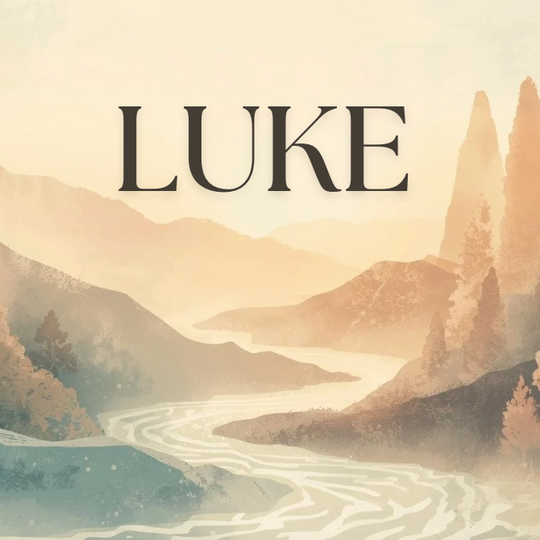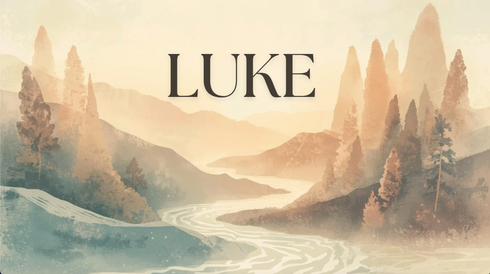
Luke 20: Jesus Can Shut a Fool Up
Luke 20 reads like a courtroom drama that keeps breaking into a masterclass on truth. The chapter opens with a confrontation over authority, and it never lets go of that theme. Who gets to define what is right, what is owed, and what lasts beyond death? In our conversation, we walk slowly through each scene, noting how Jesus refuses to accept loaded questions on their terms and instead reframes reality around God’s kingdom. The religious leaders ask, “Who gave you the right?” but Jesus refuses to enter their trap until they wrestle with John’s baptism. It is a piercing move: if they cannot answer where John’s authority came from, they are not seeking truth but leverage. This sets the tone for the rest of the chapter—Jesus will not play by power’s script. He makes them face their own evasions, and the silence that follows is not simply tactical; it is moral exposure.
From there, the parable of the tenant farmers widens the camera angle. We see generations of refusal in a single story. Servants arrive to receive the owner’s due and are beaten, shamed, sent away empty. Finally the beloved son comes and is murdered for the inheritance. Jesus ties the pattern of Israel’s history—prophets rejected, truth resisted, repentance delayed—into one sobering image, then quotes the psalm about the rejected stone becoming the cornerstone. The effect is double-edged. On the one hand, God’s plan will not be stopped by human rejection; the cornerstone stands and supports a new structure. On the other hand, that same stone is immovable; to trip over it breaks us, and to be crushed by it is judgment. The parable is not an abstract morality tale; it is an invitation to respond before the vineyard changes hands. This is where we must ask hard questions of our own hearts: do we welcome God’s claim on our lives, or do we resent it when it collides with our plans?
Then comes the famous coin. Spies, masked as admirers, pose the tax question designed to split Jesus from either Rome or the crowds. He asks for a denarius and draws attention to the image and inscription. “Give to Caesar what is Caesar’s, and to God what is God’s.” The line is often quoted, rarely obeyed in full. It is not only about paying taxes; it is about recognizing jurisdiction. Coins bear Caesar’s image and circulate in his system; our whole selves bear God’s image and belong to his rule. The wisdom here is spacious and searching. It frees us from false binaries—either political quietism or reckless revolt—by calling us to ordered allegiance: obey the state in its proper sphere, and reserve ultimate loyalty for God. For today, that means we honor laws, pay fair dues, and still refuse to sacrifice conscience, worship, or neighbor-love to any earthly power. The question beneath the question is: whose image shapes your choices, calendar, wallet, and words?
The Sadducees arrive next with a thought experiment about levirate marriage. Their premise denies resurrection, so their riddle—seven brothers, one widow—tries to make life after death look absurd. Jesus corrects the category mistake. Resurrection life is real, but it is not a replay of earthly structures. There, we neither marry nor are given in marriage; we are children of God and of the resurrection. That is not a downgrade of love but its consummation: human covenants give way to the unbroken union between Christ and his people. To ground this in Scripture, Jesus cites Moses at the bush—“the God of Abraham, Isaac, and Jacob”—present tense, because God is the God of the living. This is not philosophy grafted onto faith; it is faith’s own confession that the Lord’s covenant outlives the grave. For the grieving and the curious alike, this truth steadies us: our relationships are not erased but transfigured; our identity does not dissolve but is completed in the life of God. Hope is not wishful thinking; it rests on the One who names the living by name.
Finally, Jesus asks his own question: if David calls the Messiah “Lord,” how can the Messiah be his son? He is not denying Davidic lineage but expanding their imagination. The Christ is greater than dynasty; he is Lord, seated at God’s right hand, subduing enemies by a kingdom not built on robes, greetings, or seats of honor. This exposes the leaders’ performance—religion without repentance, lengthy prayers without justice, public piety coupled with private exploitation. The warning is sharp: God sees. The cure is near: return to the cornerstone. For us, the call is practical. We can examine where we crave recognition more than righteousness, where we polish appearances while neglecting the vulnerable. The path forward is the same today as in the temple courts: receive the Son. Let his authority reset our stories. Render to God what bears his image—your mind, your strength, your neighbor-love—and walk with quiet courage under his lordship that outlasts every throne.
Let’s read it together.
#biblebreakdown
Get this text to you daily by texting "rlcBible" to 94000.
The More we Dig, The More We Find.




